We Asked the Industry: "Top Cloud Technology Challenges?"

We asked businesses to share the biggest challenges with site migration – let me tell you, it’s a crazy mix of situations with some very real truths...
And that’s what we want to talk about.
The Public Cloud has opened up amazing possibilities. And it is changing the types of challenges businesses encounter.
So, without further ado, let's see what they had to say:
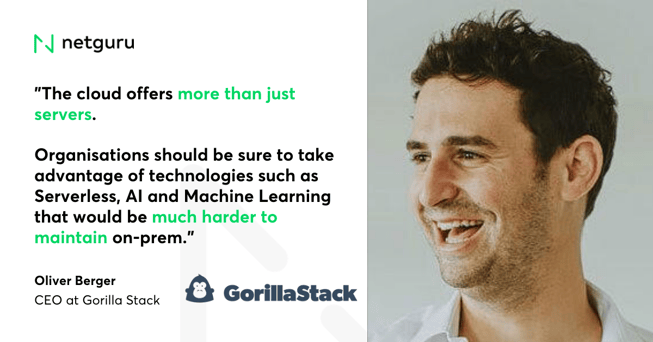
"Cloud migration often involves simply taking your existing infrastructure and moving it to the cloud without updating the architecture to leverage the advanced capabilities of the cloud provider.
This process is often known as a “Lift and Shift”. Essentially an organisation ends up with the same challenges they started with pre-migration, except they're not managing the hardware internally. This fails to make full utilization of the advanced services offered by a move to the cloud.
From an innovation perspective, the cloud offers more than just servers. Organisations should be sure to take advantage of technologies such as Serverless, Artificial Intelligence and Machine Learning that would be much harder to maintain on-prem, but are easily accessible services from most providers."
Oliver Berger
CEO at GorillaStack
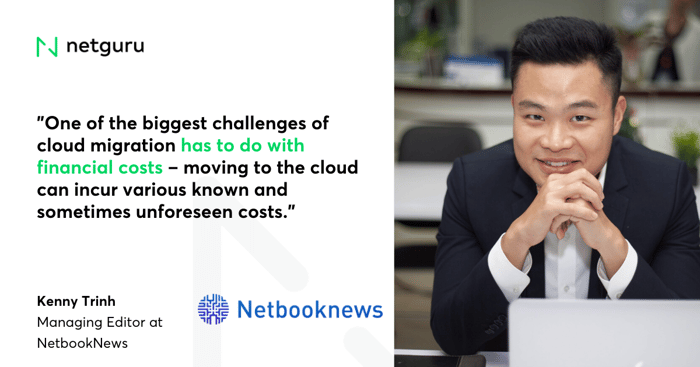
"One of the biggest challenges of cloud migration has to do with financial costs – moving to the cloud can incur various known and sometimes unforeseen costs.
Although using cloud is often cost-effective in the long run, initially the move can be expensive, especially if the potential financial impact is poorly planned. Another factor to consider is the cost of training employees on the new technology, as well as the cost of restructuring data to make it compatible with cloud architecture – in addition to vendor lock-in.
Cloud services can save you money as they don't require regular maintenance compared to on-site data centers and you only pay for what you use. You can also either add more virtual storage or terminate the whole service if you don’t need it anymore."
Kenny Trinh
Managing Editor at Netbooknews
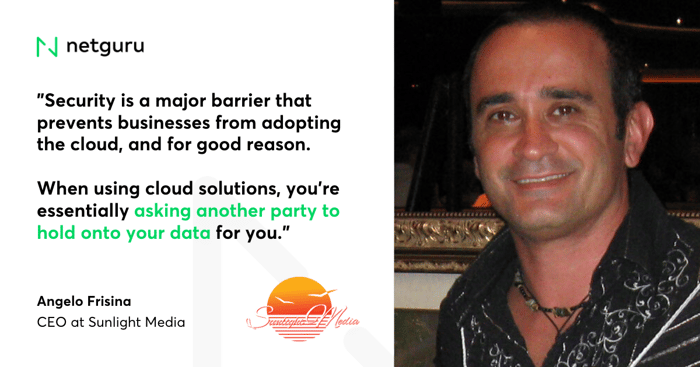
"Security is a major barrier that prevents businesses from adopting
the cloud, and for good reason. When using cloud solutions, you're essentially asking another party to hold onto your data for you.You should be made aware of your cloud provider's security practices. You should also know where your data will be stored, how the provider encrypts your incoming and outgoing data, and what regulations the provider is compliant with.
Even if your initial expectations for a cloud vendor are positive, you may find after starting the cloud migration process that your vendor isn't working for you. Vendor lock-in is a common problem for adopters of cloud technology, because moving data from one cloud to another is a long, costly process. When you're choosing cloud providers, it's important to consider what your cloud goals are and which vendor is the most likely to help you achieve them."
Angelo Frisina
CEO at Sunlight Media
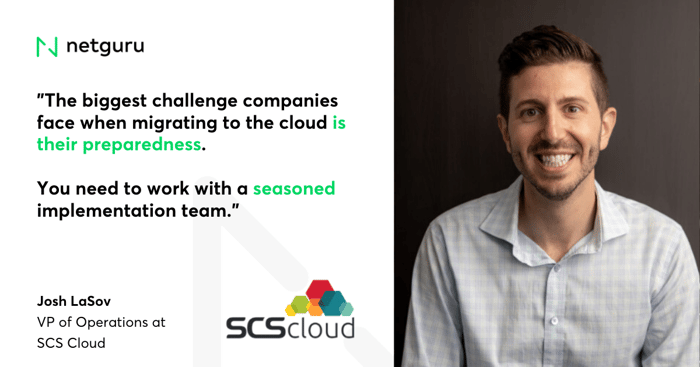
“The biggest challenge companies face when migrating to the cloud is their preparedness. You need to work with a seasoned implementation team that has strong project management skills, system experience and industry expertise.
Additionally this team needs to be able to stick around after the
implementation is done since on-going support is always required.”
Josh LaSov
VP of Operations at SCS Cloud
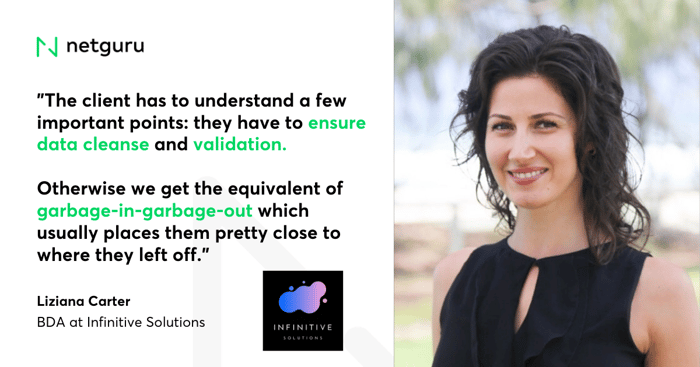
"There are obvious advantages of moving from on-premise to the cloud, like the ability to access it from anywhere, disaster recovery features, and increased security. Clients are aware that they get a lot for their investment. Flexibility and increased collaboration between team members, they get their updates done for them and any upgrade from their current system will mean a step forward and embracing the latest tech has to offer.
This is all good in theory, but when it comes to performing the actual migration, the client has to understand a few important points: they have to ensure data cleanse and validation, otherwise we get the equivalent of garbage-in-garbage-out, which usually places them pretty close to where they left from. This is an opportunity for them to clean their data. If they have a messy chart of accounts, now is the time to start fresh."
Liziana Carter
Business Development Advisor at Infinitive Solutions
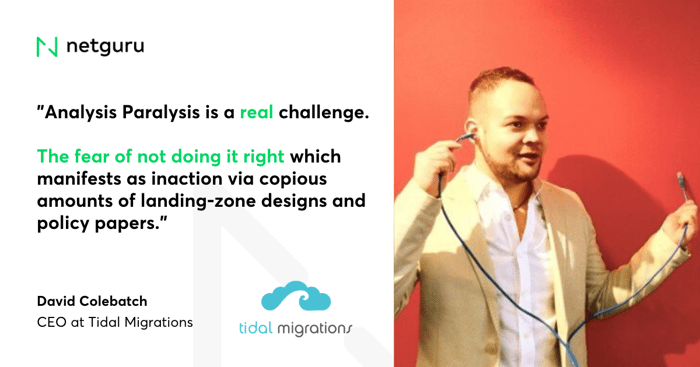
"There's two big inhibitors I have seen in working with clients: (1)
Analysis Paralysis – the fear of not doing it right which manifests as
inaction via copious amounts of landing-zone designs and policy papers; and (2) not knowing what applications and technologies are within the
datacenter(s) to begin with!
To mitigate, organizations should apply rapid application-centric assessment tools to perform a kind of x-ray on their environment. From here, the low-hanging fruit applications for migration will become obvious and migrations can begin right away. The most impactful business improvements that come from an application-led cloud migration are improvements to operational efficiencies, by leveraging cloud-native technologies such as serverless runtimes and databases, and increases to both agility and application security."
David Colebatch
CEO at Tidal Migrations
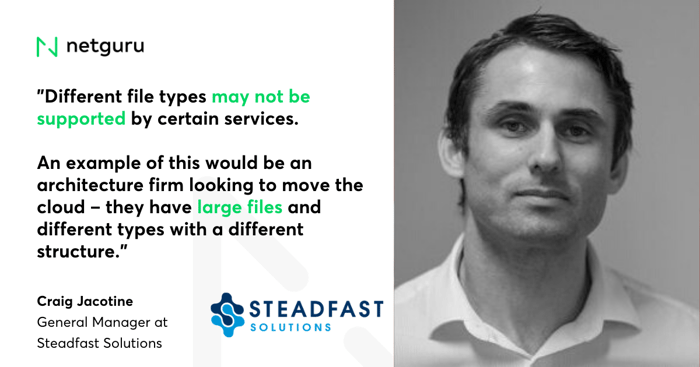
"On top of bandwidth limitations, different file types may not be supported by certain services. An example of this would be an architecture firm looking to move to the cloud. They have large files and different types with a different structure. Companies get caught out trying to move these files to SharePoint or a remote server.
If moving to the cloud saves money is actually questionable. In small to medium businesses, the number is tight. Generally, SMBs only have 1 -2 servers. Moving email to O365 or Google Mail is a no brainer for all market sizes. In an enterprise, the prices will begin to stack up due to the number of servers. There are always upfront costs on the move, but returns come later through server rationalization and efficiency.”
Craig Jacotine
General Manager at Steadfast Solutions
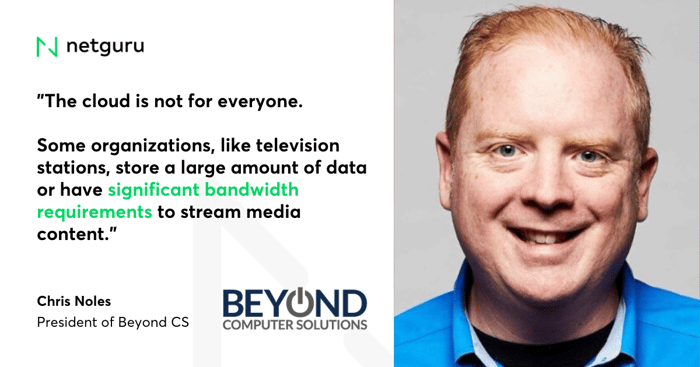
"A lot of companies see the cloud as an opportunity to control costs and provide remote access to staff. There are a few challenges to consider before deciding to go to the cloud – the first thing you should know is that not every cloud solution is the same. The cloud is just a server in a data center. The two most popular options are hosted desktops and file sync & share software.
Moving to the cloud does not have to be expensive or time -consuming – there are many great tools out there that help automate the process with little or no downtime. The cloud is not for everyone. Some organizations store a large amount of data or have significant bandwidth requirements to stream media content. It is important to work with a professional who can help you calculate costs. For example, we worked with a client who has a television station where live broadcasts and media content would not work on cloud servers due to latency. We installed a server at their facility and we backup their data to the cloud."
Chris Noles
President of Beyond Computer Solutions

"Choices abound and the decision depends on what level of control and security you require. Data loss is a real threat if your cloud service crashes or gets hacked. Be sure to have a backup plan in place and look for CSPs who offer redundancy.
With files in the cloud and applications on the desktop, there's latency as the two talk to each other. This is negligible with office applications, but can be a time-sink with technical and scientific applications.
Managing applications in the cloud is simpler because it's centralized.
Single-sign-on (SSO) improves security and provides usage information. But, if the internet goes down, no one can work and business stops. Make sure you have a local survival kit for each user to continue with critical business tasks.
The benefits of the cloud outweigh the risks by far. That said, it's
important to have critical assets available on local PCs in the event of
an outage or cyber attack."
Jean Haney
Co-Founder and CEO at Visual Integrity Technologies
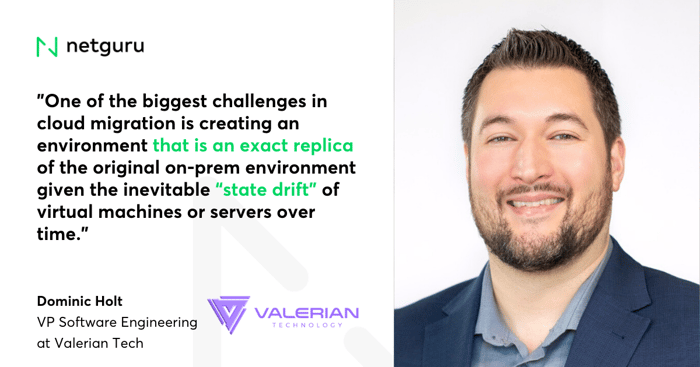
"In my experience one of the biggest challenges in cloud migration is creating an environment that is an exact replica of the original on-prem environment given the inevitable “state drift” of virtual machines or servers over time. Especially for complex systems, re-creating a working environment for a legacy system with all the right dependencies and specific versions can be a real bear. Often times, you also don’t just want to switch from on-prem to the cloud and want to modernize in the same fell swoop.
Moving from on-prem to the cloud can provide significant value for a business ranging from reduced cost in maintaining an on-prem environment, resilience of the system through increased up-time, back-ups/failovers, availability, scalability, and more."
Dominic Holt
VP Software Engineering at Valerian Tech
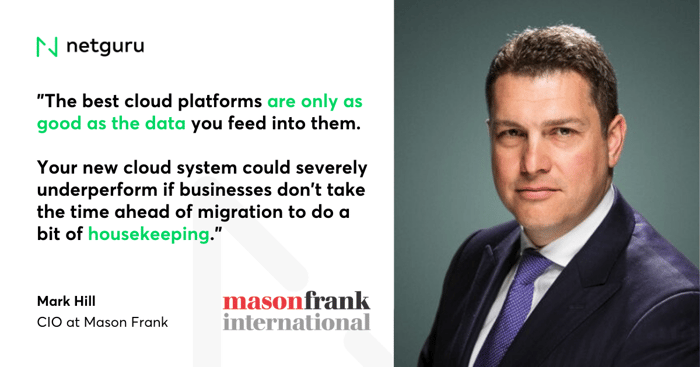
"Moving legacy applications to the cloud can feel like trying to shove a square peg into a round hole. Unfortunately, cloud migration isn’t always a case of dragging and dropping your data from your server to someone else’s.
Whether a company is porting their data to a more accessible and secure online storage platform or adopting cloud-based software, there’ll always be data to transfer in the process. Scooping up years and years of legacy data as-is and dumping it into its new home can cause massive problems, both during the migration process and further down the line.
Even the best cloud platforms are only as good as the data you feed into them, so your new cloud system could severely underperform if businesses don’t take the time ahead of migration to do a bit of housekeeping."
Mark Hill
CIO at Mason Frank
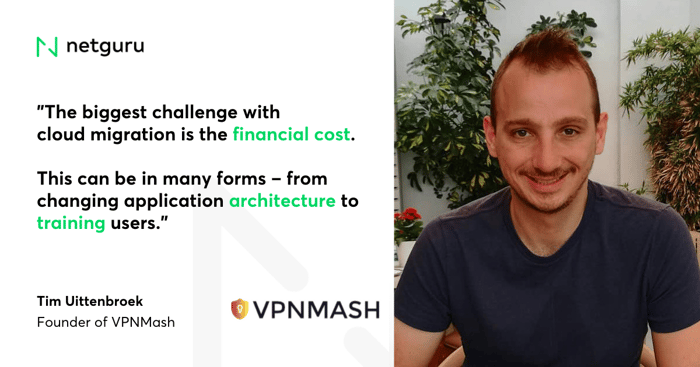
"The cloud platform has single-handedly improved the efficiency of businesses. After switching to the cloud, they can have remote access to their large data and can make changes in their operation from anywhere.
Cloud technology saves plenty of time for its onboard businesses. Its cross-platform compatibility and an online data recovery plan makes your business secure for any disaster or data breach.
Despite the productivity of cloud platforms, the biggest challenge with cloud migration is the financial cost. This can be in many forms, such as changing application architecture, training users on the new system, investing in migration and bandwidth costs."
Tim Uittenbroek
Founder of VPNMash
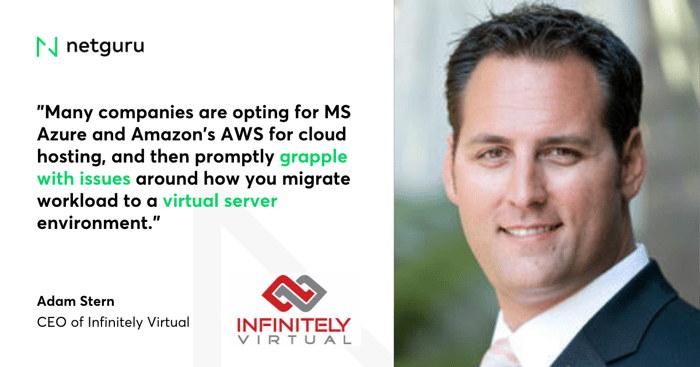
"A great many companies are opting for MS Azure and Amazon’s AWS for cloud hosting and then promptly grapple with issues around how you migrate workloads to a virtual server environment – and they quickly realize that the process of reinstalling software and migrating users can be overwhelming. For many, the most effective response to the challenge of going with a third party is to select a managed hosting company, which is capable of handing the entire transition from beginning to end.
Done right, cloud migration can save significant dollars and deliver real peace of mind.”
Adam Stern
CEO at Infinitely Virtual
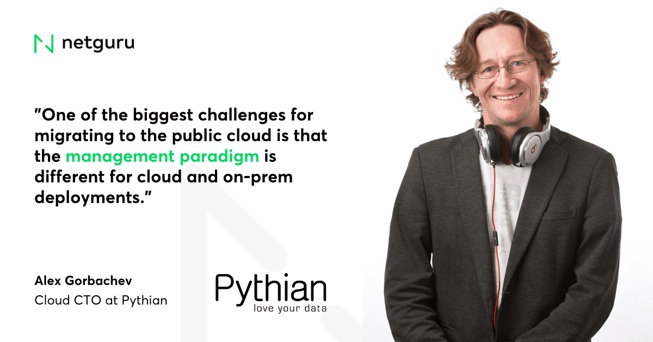
"One of the biggest challenges for migrating to the public cloud is that the management paradigm is different for cloud and on-prem deployments, while cloud-native architecture is completely different from on-prem.
On-premise infrastructure management requires multiple specialized teams with deep domain knowledge, which creates a siloed environment. In contrast, cloud management calls for a single cloud infrastructure team with the focus on the end-to-end stack, automation, and collaboration.Thanks to managed infrastructure services (networking, storage, compute), there is no need for specialized knowledge of how certain network routers work, for example. Instead, the cloud management shifts focus to collaboration, integration, and agility enabled by automation.
Cost optimization and agility are usually the top two reasons businesses move to cloud, but to truly take advantage of these opportunities, businesses must adopt cloud-native infrastructure design principles and new infrastructure management regimes."
Alex Gorbachev
Cloud CTO at Pythian
Summary
So we've had a chance to explore some of the challenges and benefits of cloud technology.
It's clear there are many things to consider before making the switch – maybe you are just starting out and need new ways to scale your application.
Or perhaps you still need to figure out what benefits a DevOps team can bring to your company before making a decision to move from on-prem to the cloud.
And, last but not least, you might still be worried about the security of your website and how you can maintain that as you scale – don't worry, we have you covered!
Netguru is proud to be an APN Consulting Partner – we can help you develop a long-term strategy to make sure your migration is a success while keeping it affordable.
Let us know about your challenges to see how we can help.




















%20_HD.jpg?width=384&height=202&name=DSC_7814%20(1)%20_HD.jpg)


